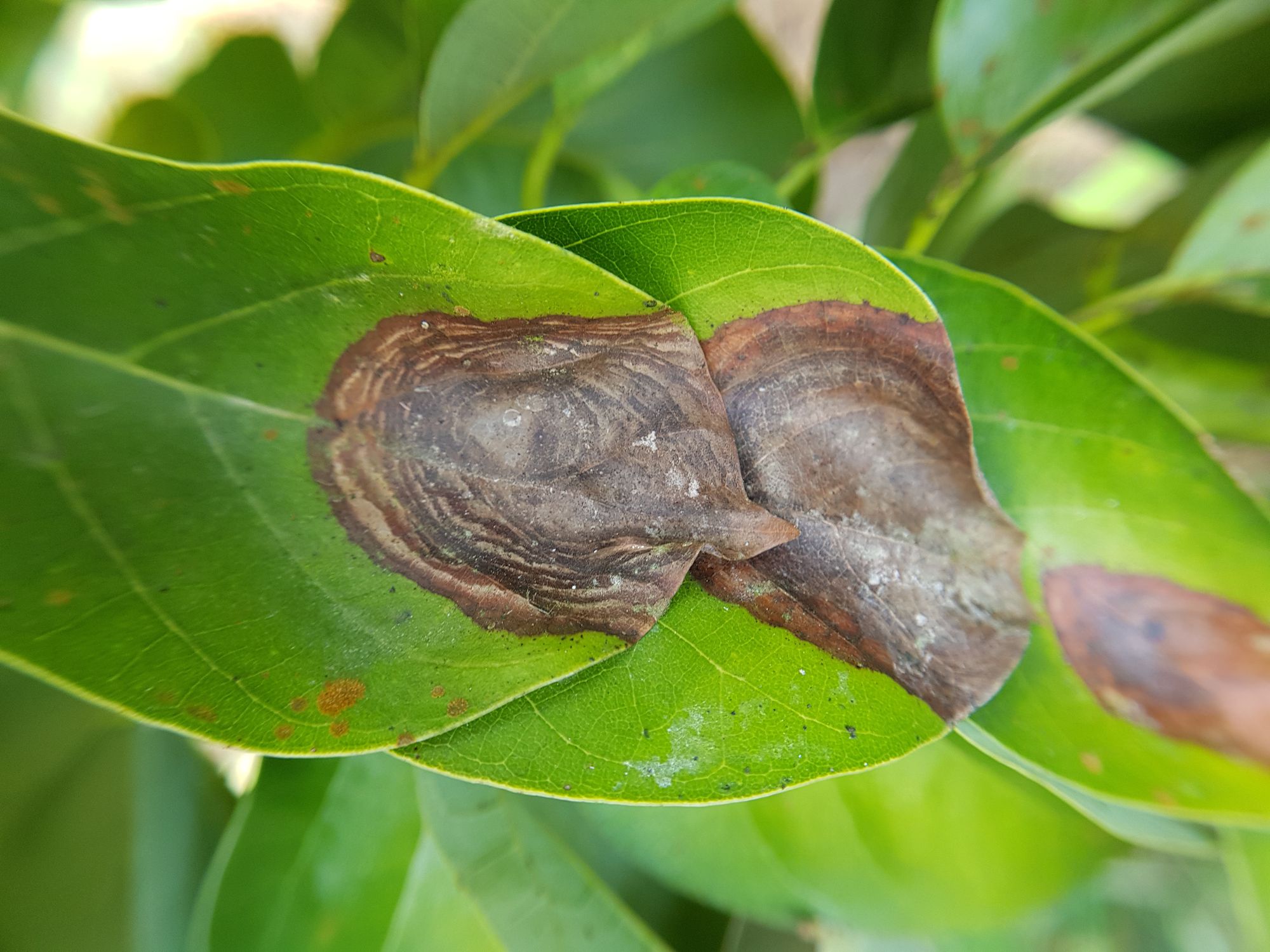
Anthracnose
Colletotrichum Sp.
Pathogen:
Fungus
Type:
Risk:
HIGH
Antracnosis
Plantas decorativas de jardín y/o interior


WHO CAUSES IT?
Colletotrichum sp. It is a genus of phytopathogenic fungi that affects a wide variety of plants. These fungi survive in the remains of infected plants and in the soil as resistant structures called sclerotia or in the form of dormant mycelium. When environmental conditions are favorable, especially in the presence of high humidity and warm temperatures, fungi produce conidia, which are asexual spores. Conidia are dispersed by wind, water and contact with agricultural tools and machinery. Upon reaching a susceptible plant, the conidia germinate and penetrate plant tissues through wounds or natural openings. Once inside the plant, the fungus colonizes the tissue, producing lesions that can expand rapidly, compromising the health and performance of the plant.
SYMPTOMS
Anthracnose caused by Colletotrichum sp. It manifests itself in various parts of plants, including leaves, stems, flowers and fruits. The disease is characterized by the appearance of dark, sunken Taches in the affected areas, which can expand and join together, causing extensive necrosis. Affected tissues often develop a watery appearance and may exude a sticky fluid under high humidity conditions.
- Black or brown Taches on leaves and stems.
- Sunken lesions in fruits and flowers.
- Discoloration and death of plant tissues.
- Premature fall of leaves and fruits.
- Delay in plant growth.
- Deformation of flowers and fruits.
- Presence of masses of pink or orange spores in the lesions.
- Withering of aerial parts of the plant.

TEMPERATURE AND HUMIDITY
20°C a 30°C
80% a 100%
TRANSMISSION ROUTES
Spores carried by wind, Contact with infected soil, Contaminated tools, Irrigation with infected water, Infected plant material, Movement of sclerotia in soil
Do you want to remove this pest? Choose how you want to treat it.
TREATMENTS
Chemical treatments
• AZOXISTROBIN 25% [SC] P/V
• CAPTAN 47.5% [SC] P/V
• CIPRODINIL 37.5% + FLUDIOXONIL 25% [WG] P/P
• FOLPET 50% [SC] P/V
• FOLPET 80% [WG] P/P
• METIRAM 70% [WG] P/P
• PIRACLOSTROBIN 6.7% + BOSCALIDE 26.7% (I) [WG] P/P
• CUPRIC HYDROXIDE 25% (EXPR. IN CU) [WG] P/P
• LAMINARIN 4.5% [SL] P/S
• COPPER OXYCHLORIDE 35% (exp. in Cu) [WG] P/P
• COPPER OXYCHLORIDE 38% (EXPR. IN CU) [SC] P/V
• COPPER OXYCHLORIDE 50% (EXPR. IN CU) [WP] P/P
• COPPER OXYCHLORIDE 52% (EXPR. IN CU) [SC] P/V
• CUPROCALCIC SULFATE 20% (EXPR. IN CU) [WG] P/P
Authorized treatments in organic farming
• CUPRIC HYDROXIDE 25% (EXPR. IN CU) [WG] P/P
• LAMINARIN 4.5% [SL] P/S
• COPPER OXYCHLORIDE 35% (exp. in Cu) [WG] P/P
• COPPER OXYCHLORIDE 38% (EXPR. IN CU) [SC] P/V
• COPPER OXYCHLORIDE 50% (EXPR. IN CU) [WP] P/P
• COPPER OXYCHLORIDE 52% (EXPR. IN CU) [SC] P/V
• CUPROCALCIC SULFATE 20% (EXPR. IN CU) [WG] P/P
Biological control
• BACILLUS SUBTILIS (STRAIN QST 713) 1.34% [SC] P/V
Recommendations
- Use pathogen-free seeds and plants, obtained from reliable suppliers.
- Implement crop rotation practices to reduce the accumulation of the fungus in the soil.
- Apply preventive and systemic fungicides at critical stages of crop development.
- Maintain adequate spacing between plants to promote air circulation and reduce humidity.
- Remove and destroy remains of infected crops to prevent the spread of the fungus.
- Avoid overhead irrigation, especially in the afternoon or evening, to reduce humidity in the foliage.
- Use crop varieties resistant or tolerant to anthracnose.
- Disinfect tools and work equipment to prevent the spread of the pathogen.
- Regularly monitor crops for early detection of symptoms and apply control measures in a timely manner.
Sponsored link
Sponsored link
Sponsored link
Sponsored link
Sponsored link
Sponsored link
Effective against all types of fungi
TREATMENTS
Homemade remedies
There are no home treatments
Natural allies
Chemical treatments
There are no treatments for this disease. Treatments are directed at the insect vectors that transmit it. See insect treatments.
RECOMMENDATIONS
- Check the back of the leaves frequently, especially in dry weather.
- Spray water on the leaves to increase humidity and prevent them from settling.
- Keep plants healthy with good watering and adequate light.
- If you see cobwebs or damage, clean the leaves with a damp cloth or pressurized water.
- Use potassium soap or neem oil every few days until they disappear.
REPELLENT PLANTS
Rosemary, Dill, Coriander
EFFECTIVE PRODUCTS TO ELIMINATE THIS PEST
Sponsored link
Sponsored link
Sponsored link
Sponsored link
Sponsored link
Sponsored link
Effective against all types of fungi
*The recommended treatments are recommendations based on the authorities' databases and do not replace in any way the guidelines established by the legislation of each country.
*Products shown are recommendations and not our own products. As Amazon Associates, we earn revenue from purchases of recommended products.






















